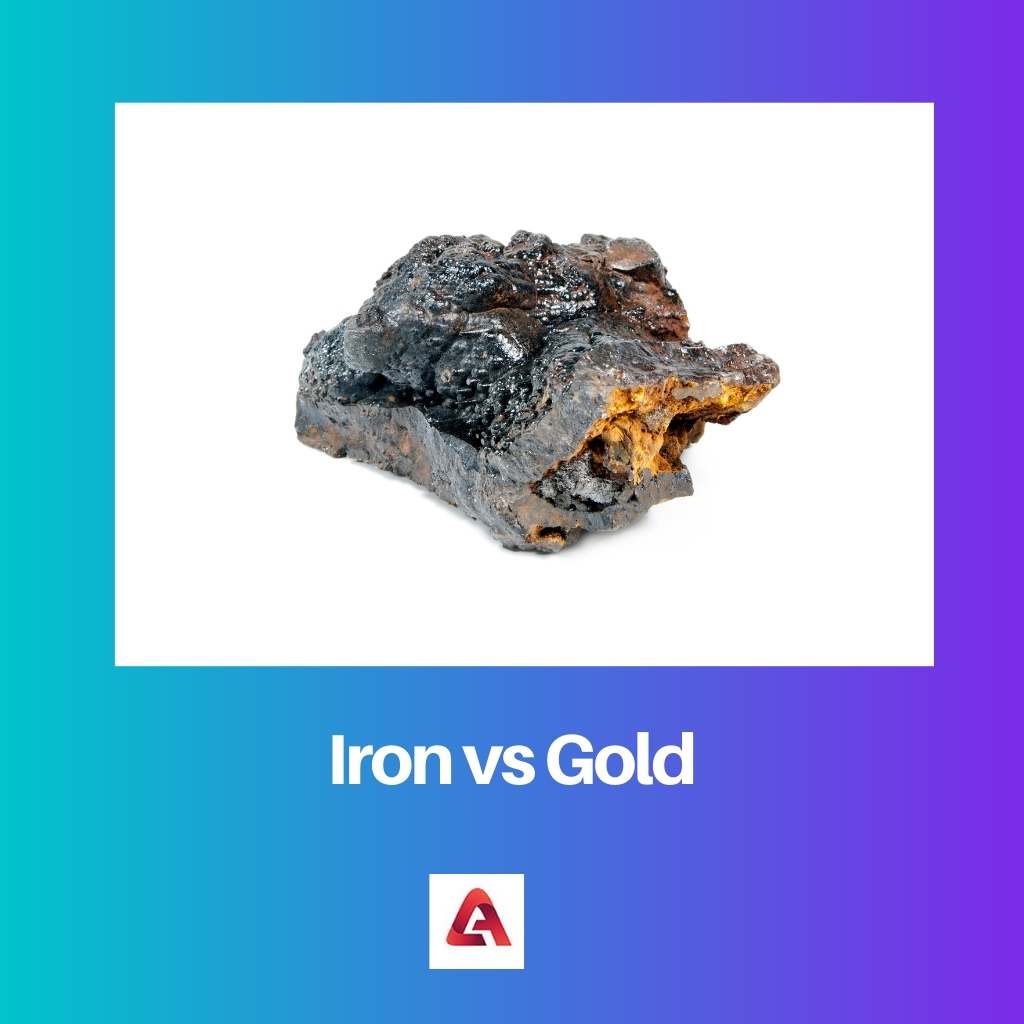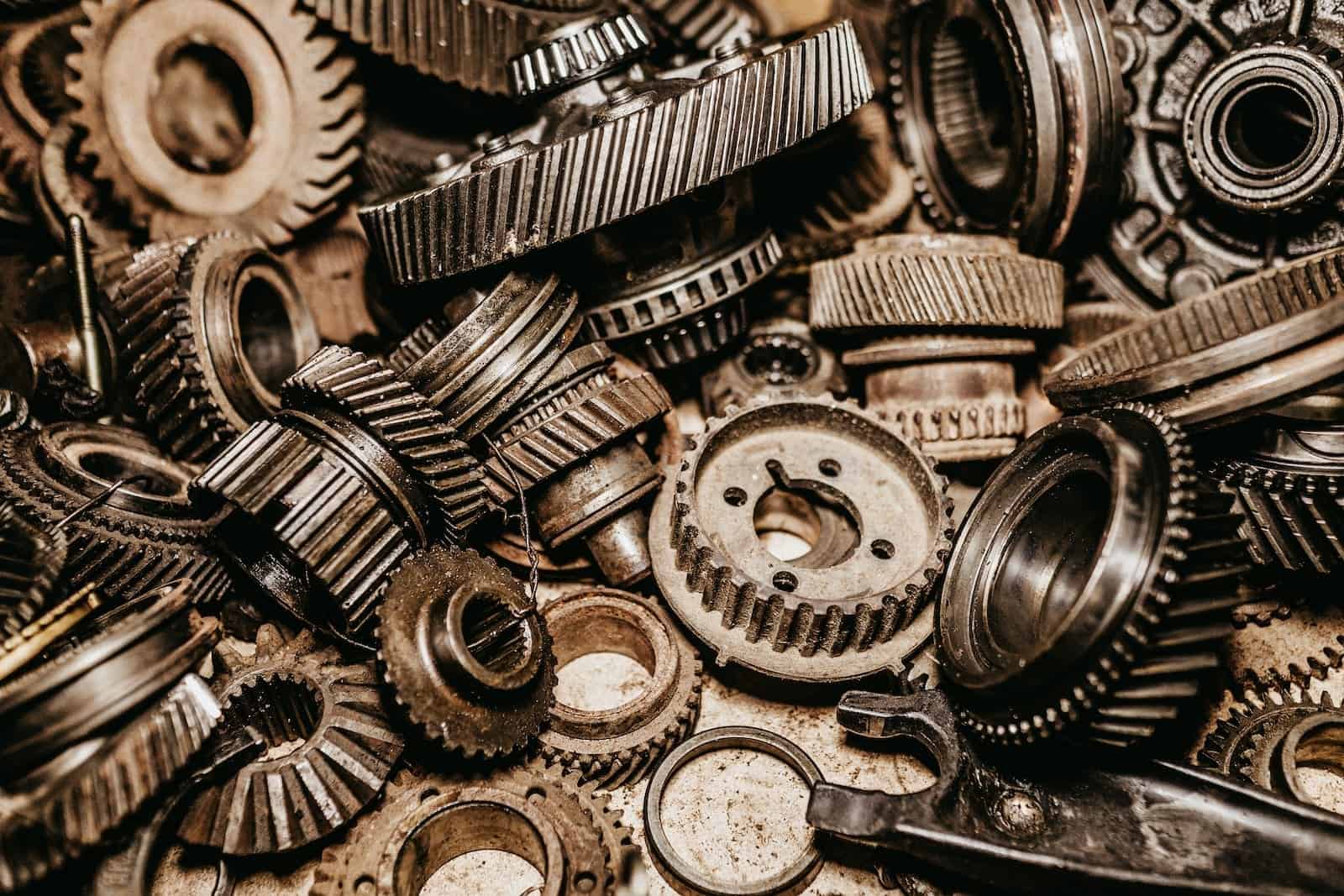Iron and gold are some of the most common metals found on Earth. Both are widely used in various ways and domains.
They have various differences, especially when it comes to their physical and chemical properties. Both of these metals have become an important and vital part of our lives.
Key Takeaways
- Iron is a strong, magnetic metal widely used for construction and manufacturing, while gold is a soft, non-reactive metal valued for its rarity and aesthetic appeal.
- Gold is more resistant to corrosion and tarnishing than iron, which can rust over time.
- Iron is more abundant and less expensive than gold, which is highly prized and used for jewellery and investment purposes.
Iron vs Gold
Iron is a metal with an atomic number of 26 that is found in the inner and outer cores of the Earth. It is a natural metal used to make different modern products and is the most common element on Earth. Gold is a yellow-colored metal with an atomic number of 79 that is found in alluvial deposits and metal ores.

Iron, silver in color, has the periodic symbol ‘Fe”. Its atomic number is 26, and its standard atomic weight is 55.845 g mol.
It is a very chemically active metal. It is cheaper when compared to gold and tends to be affordable.
It can be found in Earth’s crust and core.
Gold, yellow in color, has the periodic symbol ‘Au”. The atomic number of gold is 79, and it has 196.96 as the standard atomic weight.
It is a chemically inactive metal. It is very expensive.
It can be found in metal ores or in alluvial deposits.
Comparison Table
| Parameters of Comparison | Iron | Gold |
|---|---|---|
| Color | Silver | Yellow |
| Periodic Symbol | Fe | Au |
| Atomic Number | 26 | 79 |
| Found in | The inner and outer core of Earth. | Ores of metal or in alluvial deposits. |
| Standard Atomic Weight | 55.845 g mol | 196.96 g mol |
| Boiling Point | 2862 degree Celsius | 2700 degree Celsius |
| Melting Point | 1538 degree Celsius | 1064.18 degree Celsius |
| Density | 7.87 grams per cubic centimeter | 19.03 grams per cubic centimeter |
| Chemical Activity | Chemically active | Chemically inactive |
| Cost | Cheaper | More expensive |
| Uses | In civil engineering and manufacturing. | Jewelry, art, decoration, ornaments, coinage, etc. |
What is Iron?
Iron (Fe) is a metal belonging to the first transition series and group 8 on the periodic table. It is a chemical element with the atomic number 26.
It is also known as the most common element on Earth (32.1%).
It is found in the inner and outer cores of the Planet. It is called the fourth most prevalent element in the Earth’s crust.
An adult human’s body has approximately 4 g of iron. Iron aids in oxygen transport, storage, vertebrate metabolism, and other processes.
It is also very chemically active and reacts with oxygen and water to produce hydrated iron oxides, also known as rust. There are four allotropes found of iron as of now.
It has four stable isotopes.
Iron has a boiling temperature of 2862 degrees Celsius and a melting point of 1538 degrees Celsius. Iron has a density of 7.87 grams per cubic centimeter.
It is also quite inexpensive in comparison to gold.
It is highly magnetic in nature. It is also known as the sixth abundant element in the entire universe.
It is not malleable, nor is it that ductile.
Iron can be used in the manufacturing process of steel or in civil engineering. It is also used to make alloy steels like nickel, manganese, tungsten, etc.
It is also used in vehicles, appliances, medical devices, utensils, etc.

What is Gold?
Gold (Au) is a transition metal that occurs in group 11 of the periodic table. It is a chemical element with the atomic number 79.
It is bright yellow, with a slight tint of reddish-yellow, in color.
It is found in its free elemental form, occurring as nuggets or grains in alluvial deposits and rocks. It can also occur as gold compounds like tellurium, but this form is found less commonly.
Gold is chemically inactive. This means that it is resistant to the majority of acids.
However, it dissolves in aqua regia, a mixture of hydrochloric and nitric acid. It can also dissolve in alkaline solutions and mercury.
Gold has a melting point of 1064.18 degrees Celsius and a boiling point of 2700 degrees Celsius. Its standard atomic weight is 196.96 g mol.
It has a density of 19.03 grams per cubic centimeter. It is a very expensive metal since it is considered precious.
Gold is used in various things. As it is considered a precious metal, it can be used for jewelry, art, ornamental objects, decorations, etc.
It is also used to make medals, money, and awards like the Oscars and Grammy. It is also useful in electronics, space exploration, medicine, dentistry, etc.

Main Differences Between Iron and Gold
- Iron’s periodic symbol is ‘Fe,’ and gold’s periodic symbol is ‘Au.’
- Iron has an atomic number of 26, while gold has an atomic number of 79.
- Iron is found in the Earth’s inner and outer cores, whereas gold is found in metal ores or alluvial deposits.
- Iron has a standard atomic weight of 55.845 g mol, while gold has a standard atomic weight of 196.96 g mol.
- Iron has a boiling point of 2862 degrees Celsius, while gold has a boiling temperature of 2700 degrees Celsius.
- Iron has a melting point of 1538 degrees Celsius, while gold has a melting point of 1064.18 degrees Celsius.
- Iron has a density of 7.87 grams per cubic centimeter, but gold has a density of 19.03 grams per cubic centimeter.
- Iron is very chemically active. On the other hand, gold is chemically inactive.
- Iron also tends to be cheaper, whereas gold is more on the expensive side.
- Iron can be used in civil engineering and manufacturing. Gold can be used in jewelry, decoration, ornaments, art, etc.

- https://books.google.co.in/books?hl=en&lr=&id=FM-CDwAAQBAJ&oi=fnd&pg=PP1&dq=iron+and+gold&ots=8EW7-Fqn6o&sig=YK1Hk3_r_nTYEHsOIhExyobM50w&redir_esc=y#v=onepage&q=iron%20and%20gold&f=false
- https://www.jacc.org/doi/full/10.1016/j.jcmg.2008.05.001
Last Updated : 11 June, 2023

Piyush Yadav has spent the past 25 years working as a physicist in the local community. He is a physicist passionate about making science more accessible to our readers. He holds a BSc in Natural Sciences and Post Graduate Diploma in Environmental Science. You can read more about him on his bio page.

This is a well-organized article that provides comprehensive information about the properties of iron and gold, as well as their uses and differences.
I appreciate the thorough comparison table that outlines the various parameters of comparison between iron and gold. It makes it easier to understand their differences.
The detailed explanation of the properties and uses of both iron and gold is highly informative. It’s fascinating to learn about their atomic numbers, boiling points, and densities.
The article effectively highlights the chemical properties and economic value of iron and gold, providing readers with a deep understanding of their significance in various industries.
The information about the uses of iron and gold in different fields, such as civil engineering, manufacturing, jewelry, and electronics, is quite enlightening.
The thorough explanation of iron and gold, along with their physical and chemical properties, is commendable. The article leaves no room for ambiguity.